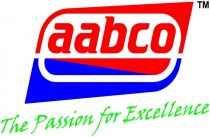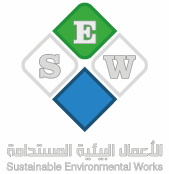Global Enhanced Oil Recovery Technologies and Markets Research Report 2018: Steam Flooding, In-Situ Combustion, Chemical Flooding, Hydrocarbon Gas Flooding, Nitrogen Flooding & Carbon Dioxide Flooding - ResearchAndMarkets.com
The "Enhanced Oil Recovery: Technologies and Global Markets" report has been added to ResearchAndMarkets.com's offering.
The scope of this investigation includes all of the major viable EOR technologies that are currently being implemented in the global oil industry. Besides hydrofracturing, tight sands or tight oil extraction are categorized as Improved Oil Recovery (IOR), of which EOR is a subset, EOR was originally developed as a means to extract additional oil from reservoirs after primary and secondary recovery methods ceased to be productive enough to maintain economical field operation.
In some cases, the EOR technologies considered in this report may also be applied immediately after the initial well drilling. These applications are common for fields where primary and secondary recovery technologies are incapable of producing adequate oil in any phase of an oilfield operation.
The installation and operation of EOR technologies can include various products and components such as injection pumps, wellheads, specialized well tubing, chemical feeder systems, air separation units, gas compressors, blowers, steam generators, specialized storage vessels, gas recapture and separation systems, and various other equipment and facilities.
Other important products of EOR technology include oil recovery media such as surfactants, polymers, alkali chemicals, liquid nitrogen, and CO2. Although steam and onsite-compressed atmospheric nitrogen are also important oil recovery media, they are not considered EOR technology products within this report because they are available at minimal or no direct cost, unlike CO2 or specialized injection chemicals, which must be supplied to an EOR operation.
The market analysis provided in this report presents region-specific and country-specific market valuation data for each of the EOR technologies considered in this study.
These include breakdowns for the following categories:
- Steam Flooding
- In Situ Combustion
- Chemical Flooding
- Hydrocarbon Gas Flooding
- Nitrogen Flooding
-
Carbon Dioxide Flooding
Key Topics Covered:
Chapter 1 Introduction
Chapter 2 Summary And Highlights
Chapter 3 Overview
Chapter 4 Regulatory Framework
Chapter 5 Industry Trends
Chapter 6 Global Market For Enhanced Oil Recovery
Chapter 7 Competitive Landscape
Chapter 8 Company Profiles
Chapter 9 Appendix A: Abbreviations Of Measurements
Chapter 10 Appendix B: Reference
Companies Mentioned
- Air Liquide
- Air Products And Chemicals, Inc.
- Baker Hughes
- BASF
- China National Petroleum Corp.
- Clayton Industries
- Cryogenic Industries
- Cyclotech (Subsidiary Of M-I Swaco)
- Denbury Resources
- Dow Chemical Co. (Merged With Dupont)
- Dresser-Rand
- General Electric
- Generon Innovative Gas Systems
- Guild Associates
- Kemira
- Kinder Morgan
- Leistritz
- Linde
- Maschinenfabrik Augsburg-Nuremberg (Man) Se
- Membrane Technology Research
- Mitsubishi Heavy Industries
- National Oilwell Varco
- Netzsch
- Premier Energy
- Rolls-Royce
- Seepex
- Shell Chemicals
- Siemens
- SNF Group
- Solvay Rhodia
- Stepan Co.
- Stream-Flo
- UBE
- Weir SPM
- Wood Group
For more information about this report visit https://www.researchandmarkets.com/research/v5xh7t/global_enhanced?w=4
View source version on businesswire.com: https://www.businesswire.com/news/home/20181018005535/en/




